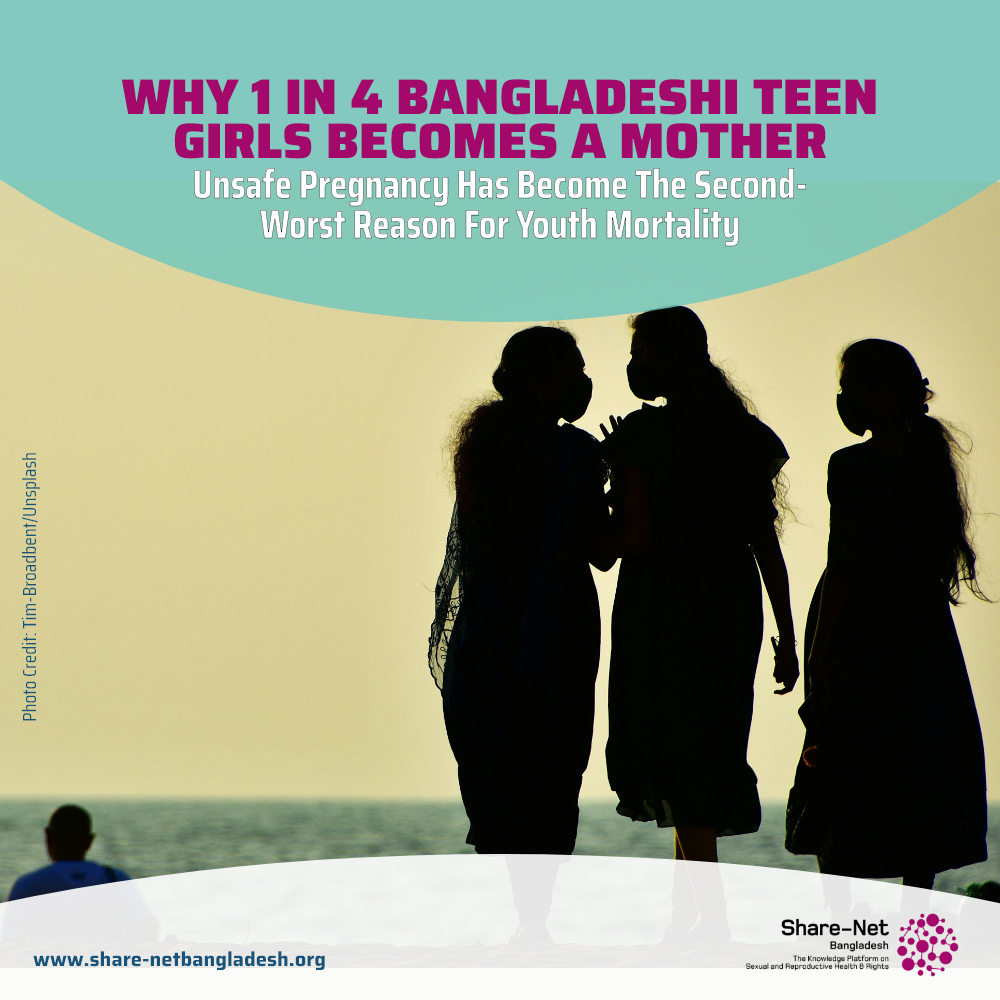Why 1 in 4 Bangladeshi Teen Girls Becomes a Mother: Unsafe Pregnancy Has Become The Second-Worst Reason For Youth Mortality
In Bangladesh, adolescents and young adults aged 10 to 24 form nearly a quarter of the population — a critical demographic for the country’s future. Yet a new study by icddr,b has sounded an urgent alarm: this age group is dying too soon, too often, and preventably.
Between 2018 and 2022, over 160 deaths among adolescents and young adults were recorded in just two surveyed areas — urban Dhaka and rural Sitakunda. The most common killers? Road traffic accidents, respiratory illnesses, drowning, and infectious diseases, including pregnancy-related sepsis.
The data reveal deep social divides. Adolescents with no formal education were 5.6 times more likely to die than their educated peers. Those from low-income families had nearly twice the mortality risk. And more than 42% of youth who died never sought medical care — not because they didn’t need it, but because they couldn’t afford or access it.
“This isn’t just about health. It’s about equity, education, and survival,” said one of the study authors.
Sexual and Reproductive Health and Rights (SRHR) issues are embedded in this crisis. Adolescent pregnancies — often unplanned, unsafe, and unsupported — continue to claim lives. Around 24% of girls aged 15–19 in Bangladesh have begun childbearing (BDHS 2022), and maternal complications remain a key cause of youth mortality. The study found infection-related deaths, many stemming from unsafe pregnancies, are far more common among girls from poorer households — a telling indicator of systemic neglect.
The research also highlighted gendered vulnerability. 56% of deaths were among males, often due to road crashes or occupational hazards. In contrast, young females faced higher risks related to infections and home-based deaths — a pattern that points toward gendered restrictions in care-seeking.
Geography matters too. Rural youth accounted for 63% of deaths, mainly due to poor infrastructure, unsafe roads, limited healthcare access, and proximity to water bodies — contributing to higher drowning rates. Urban youth, though better served by facilities, faced higher risks of respiratory illness, likely due to air pollution and overcrowding.
The findings challenge the nation’s success story in reducing under-5 mortality, exposing how youth have been left out of health priorities. The country’s adolescent death rate decreased only marginally — from 9.49 to 7.42 per 1000 over two decades — the second slowest drop in South Asia.
If Bangladesh aims to meet SDG Target 3.6 — halving road deaths — and achieve universal SRHR access, interventions must become age-responsive and equity-focused. This means youth-centered SRHR programs, road safety education, drowning prevention, and community healthcare that actually reaches adolescents where they are.
Bangladesh’s youth are not dying from rare diseases. They’re dying from things we already know how to prevent.
Download the full report from here.
Source: Journal of Global Health

